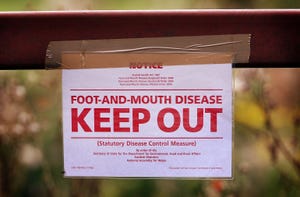Let’s keep it honest: The full story on drug residue in meat & poultry testing
James Rogers, Ph.D., director of Food Safety Testing and Research at Consumer Reports, responds to Amanda Radke’s blog post about reports indicated there are drugs in the meat supply.
September 5, 2018

Editor’s Note: Consumer Reports has submitted a response to my blog on Tuesday about their report on drugs in the meat supply. Here is their response in full.
READ: Drugs in your meat? Not so fast!
By James Rogers, Ph.D., director of Food Safety Testing and Research at Consumer Reports
In recent days, a Consumer Reports investigation indicating that potentially dangerous and banned substances have made their way into our meat supply has been called into question by industry organizations and the USDA’s Food Safety Inspection Service (FSIS). We took a hard look into the presence of drugs, including chloramphenicol, an antibiotic linked to potentially deadly anemia; phenylbutazone, an anti-inflammatory deemed too risky for human use; and ketamine, a hallucinogenic party drug and experimental antidepressant.
What we found is deeply worrisome and is why CR believes greater consideration is warranted on behalf of all consumers.
As a scientist and former FSIS official, I intimately understand how the agency collects, tests, and measures contaminants in food. When we looked at testing data from the FSIS, both an initial and then revised set, serious concerns came to light about the process, the standards applied, and the findings themselves.
At the heart of the matter is that there should never be any of these banned substances in the food supply. In the case of this testing, the FSIS created what can only be called an arbitrary and self-determined threshold, far above the legal threshold for the drugs chloramphenicol, ketamine, nitroimidazoles, and phenylbutazone, which is zero and what the Food, Drug, and Cosmetic Act mandates.
The FSIS has attempted to redirect the conversation about CR’s investigation to make it about the completeness of the data, offering up the explanation that the initial data was preliminary and released in error, and should be dismissed. The meat industry has, not surprisingly, supported that position.
Here’s the truth: the initial data set recorded thousands of data points showing detectable amounts of drugs in meat samples. The revised set issued by FSIS, using their arbitrary threshold, showed many of the results changed to “Residue Not Detected.” However, when the results that did remain were compared to the initial set, near-identical results appeared, including down to the final decimal place. The only scientific conclusion we can draw is that the entire initial data set is both real and meaningful; in many cases, trace amounts were no longer included simply because they did not meet the FSIS’s arbitrary threshold.
Upon consideration by CR scientists, and after several exchanges we had with the FSIS regarding the methods used to create both data sets, the FSIS was unable to provide a scientifically convincing rationale for why the data should be dismissed. In fact, the process used by the FSIS to set their threshold has been cloaked in secrecy, neither shared publicly, nor peer reviewed.
The criteria applied by the FSIS to the results in question do not meet established scientific methods, including peer review. They are also less rigorous than the criteria used by other government agencies, including the FDA and the EPA.
That’s why CR’s only mission is to work with and for the consumer, to keep us all safe and healthy. We are calling for more discussion within the regulatory and scientific community on how to better our food system and stand by the principle of zero tolerance for potential consumer harm from banned drugs in meat. The FSIS and the entire food industry should operate by that principle, too.
Because no consumer has a way to determine what’s inside the meals we eat — the ability to analyze food on our own — we all must be able to rely on the promises of producers, the safeguards of government standards, and the scientific tests of independent experts to ensure our safety.
You May Also Like



